You have gone most of the year without allergies, now summer is here and you are experiencing symptoms. You ask yourself “Are summer allergies a thing?” Absolutely Summer allergies are a thing! Depending on where you live, summer brings enjoyable warmth which makes plants bloom and creates an inviting environment for insects. Additionally, foods that you consume in the summer can cause your summer allergy symptoms as well. Let’s deep dive into why summer allergies are a thing, and what you can do about them.

As an Amazon Associate, I earn from qualifying purchases.
Table of Contents
What Are Summer Allergies?
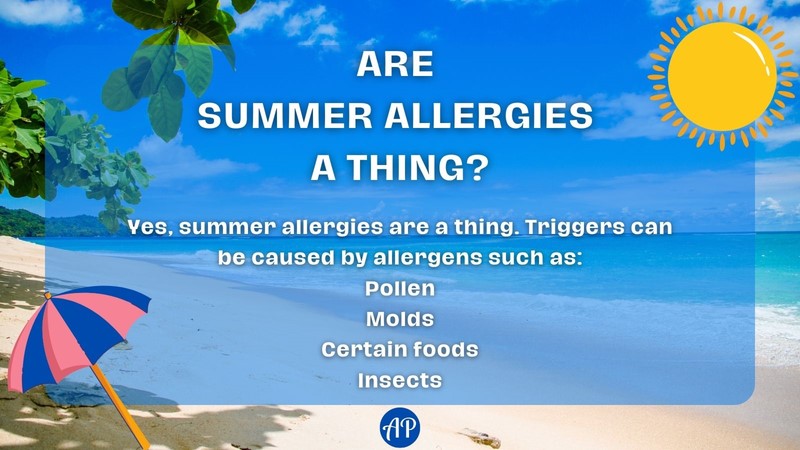
Before we jump into the fascinating world of summer allergies, we need to get the basics down. Seasonal allergies, they’re like these crazy reactions our immune system has to stuff that’s totally harmless for most people. We’re talking about allergens, these sneaky substances like pollen, dust mites, pet dander, mold spores, and even certain foods.
When someone with allergies encounters one of these troublemakers, their immune system goes into overdrive, thinking it’s a full-on invasion!
To defend the body, the immune system unleashes its secret weapons, like histamine. It’s like the boss sending out the troops! But here’s the kicker: this immune response triggers all sorts of unpleasant allergy symptoms.
How Long Do Allergies Last in the Summer?

The summer season is typically defined as running from 1 June through 31 August. Unfortunately, there is no clear start and stop day for summertime allergies.
For individuals who live south of the equator (southern hemisphere), the summer allergy season spans from November through March.
The summer allergy season varies by location and weather patterns. Depending on where you live, summer allergies may start as early as May and not end until October.
What Causes Summer Allergies?
Summer allergies can be caused by a multitude of triggers. The most common summer allergy triggers are grasses & weeds, molds, insect bites, and stings, and sometimes the consumption of certain fruits and vegetables. During summer, you may notice allergies at the beach, while outside having a picnic, or constantly during all summer months.
Grass and Weed Pollen
Grass and weed pollen spreads by hitching a ride with the wind. Pollen is small in size and can easily attach to your clothing, skin, and hair. These tiny allergy-causing particles fit easily through window screens and end up inside your home which can cause even more issues for you or a loved one.
Some folks (like me) have a less common allergy to grass called contact dermatitis, this means when it touches your skin, you develop a reaction, typically causing hives (urticaria).
Types of Grasses and Weeds That Cause Allergies
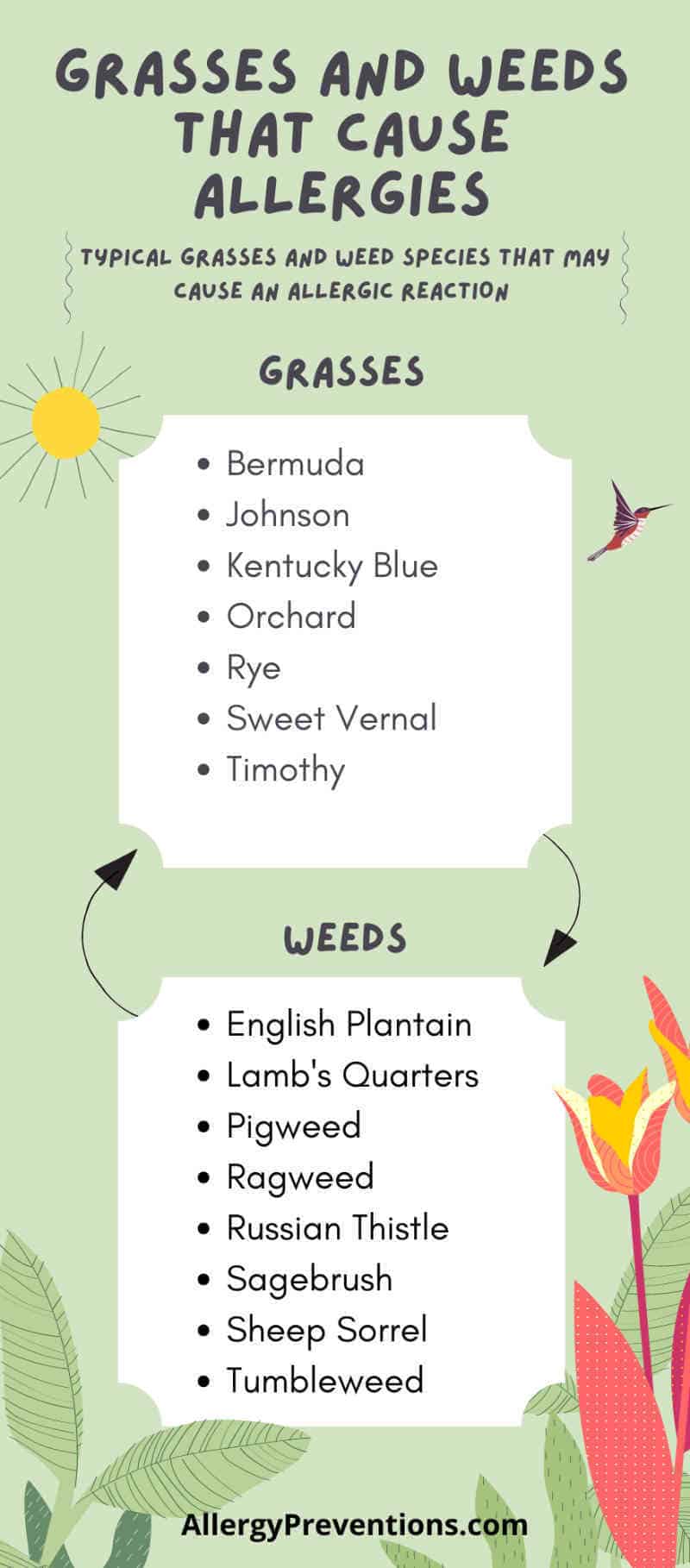
There is a multitude of grasses and weeds that you may be allergic to. Here are the types of grasses and weeds an allergist may test for:
Grasses
- Bermuda
- Johnson
- Kentucky Blue
- Orchard
- Rye
- Sweet Vernal
- Timothy
Weeds
- English Plantain
- Lamb’s Quarters
- Pigweed
- Ragweed
- Russian Thistle
- Sagebrush
- Sheep Sorrel
- Tumbleweed
Mold and Fungi Spore Allergies in Summer

With mold and fungi, my first thought is “How could my mold allergy be worse in summer when it’s so hot out?” Allergy Asthma Foundation of America states that mold and fungi “seeds” also known as spores travel in dry windy air or warm humid environments.
Summer tends to be dry and windy, or warm and humid… great for mold and fungi, bad for allergy sufferers.
Insect Stings and Bites

If you are allergic to insect stings or bites, summertime is the most likely season for your insect allergy to flare up. Summertime is when a lot of insects are active, but so are humans…Our worlds end up colliding while we both try and enjoy the weather.
Insects That Cause Allergic Reactions

There are many bugs that are known to cause allergic reactions from their bites, feces, stings, or presence. Here are the most common insects that cause allergic reactions:
- Bedbugs
- Bees
- Black flies
- Chiggers (also known as harvest mites or red bugs)
- Fire ants
- Fleas
- Hornets
- Horseflies
- Mosquitoes
- Sandflies (also known as sand gnats or no-see-ums)
- Ticks
- Wasps
Insect Bites & Stings Reactions

Not everyone reacts to insect bites, but those who do have reactions experience mild to severe symptoms. There are an array of bug bite and sting symptoms, and the American College of Allergy Asthma and Immunology summarizes these symptoms as follows:
- Abdominal cramping
- Anaphylaxis
- Difficulty swallowing
- Hoarse voice
- Intense nausea or diarrhea
- Itchy hives
- Localized swelling, welt, pain, and/or blister
- Swelling of the tongue or throat
- Tightness in the chest and difficulty in breathing
- Vomiting
Summertime Fruit & Vegetables

There are these proteins hanging out in specific fruits, veggies, and nuts, and they happen to be quite similar to the proteins found in pollen floating around in the air. Now, when someone with pollen allergies munches on these “trigger foods”, their immune system gets a bit confused and starts thinking that the proteins in the food are just like the pollen proteins. And bam! Allergic reaction time!
Consuming certain fruits and veggies when you suffer from seasonal allergies can put you at an elevated risk of triggering Oral Allergy Syndrome (OAS) during the summer months.
Potential Summer/Late Summer OAS Food Triggers
Certain summer or late summer fruits and vegetables are more likely to trigger allergy-related symptoms. This is a list of the most common pollen cross-reacting foods:
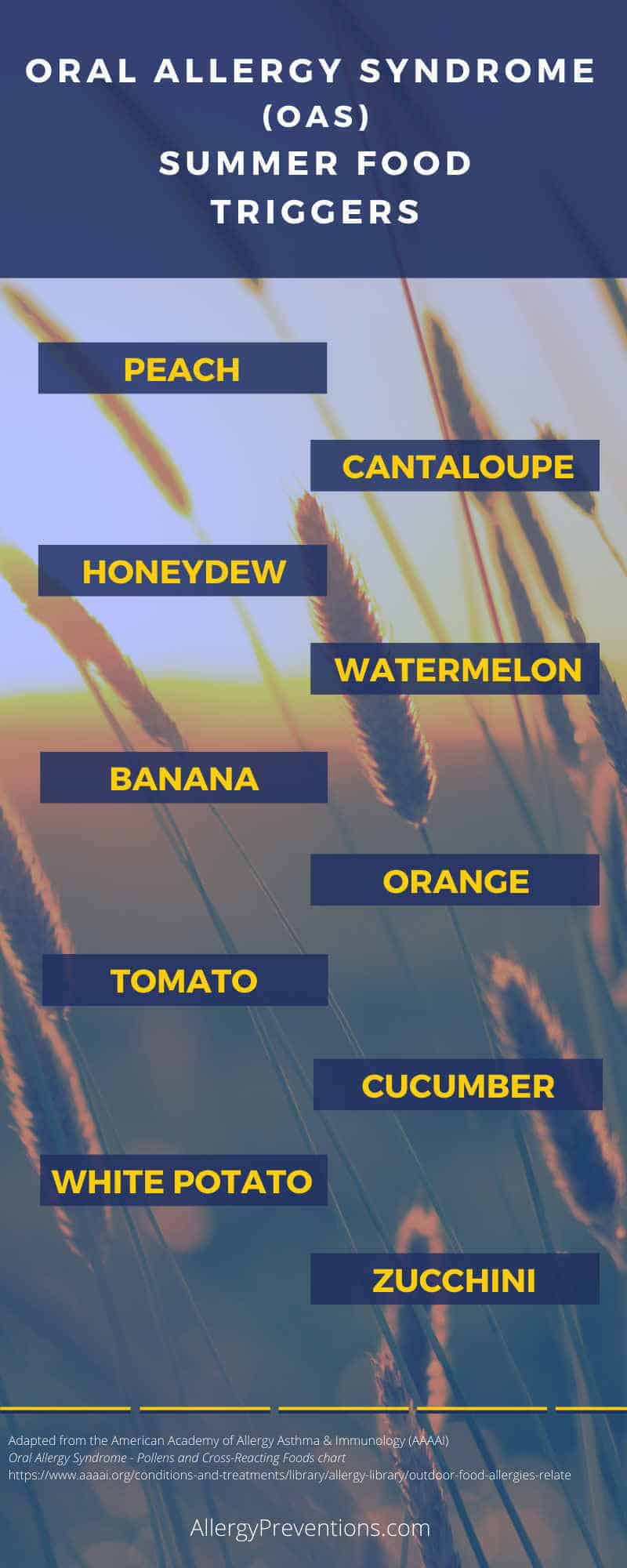
- Bananas
- Cantaloupes
- Cucumbers
- Honeydews
- Oranges
- Peaches
- Tomatoes
- Watermelons
- White Potatoes
- Zucchinis
It’s important to note that cooking or heating the trigger foods can often denature the proteins responsible for the cross-reactivity. This means that some individuals may tolerate the foods when they are cooked or processed.
If you suspect you have oral allergy syndrome, it is advisable to consult an allergist for proper diagnosis and guidance. They can perform specific allergy tests to identify your triggers and provide personalized advice on managing your condition.
Oral Allergy Syndrome (OAS) Symptoms
The main concern with fruits and vegetables as they relate to summer allergy symptoms is the onset of Oral Allergy Syndrome (OAS). The most common symptoms of OAS are itching and/or swelling of the mouth, throat, tongue, or lips, and possibly sneezing/nasal congestion.
How common is Oral Allergy Syndrome?

The AAAAI estimates that 7.8% of adults in the United States suffer from hay fever, and Stanford Healthcare estimates that up to 70% of individuals with pollen allergies experience OAS symptoms.
There are currently about 209 million adults in the U.S., leading us to 11.4 million adults affected by OAS symptoms. As you can see OAS is very common in individuals with pollen allergies, let’s go over the symptoms of OAS.
Summer Allergy Symptoms
Summer allergies can manifest in various ways, and the symptoms may vary from person to person. Here are some common symptoms associated with summer allergies:
- Congestion
- Cough
- Fatigue
- Hay fever
- Hives
- Itchy/watery eyes
- Post-nasal drip
- Runny nose
- Sneezing
- Sore throat
Summer Allergy Treatment Options

Summer allergies may be putting a damper on your vacation, but don’t fret, there are many effective allergy treatment options available to you. Many treatment options are found over the counter, but a few may require a trip to your doctor to get a prescription or a referral to an allergist.
Acupuncture

Acupuncture has been found to have immune-modulating effects, meaning it can regulate the activity of the immune system. In the case of allergies, acupuncture may help regulate an overactive immune response that triggers allergic reactions. By promoting a balanced immune system, acupuncture may reduce the severity and frequency of allergy symptoms.
Acupuncture to relieve allergy symptoms may work great, but it has mixed reviews. For each reputable study that states acupuncture relieves allergy symptoms, I was able to find other trustworthy studies that state acupuncture “may work” or “is not clinically significant” in providing symptom relief.
If this is something that piques your interest, it might be worth mentioning to your medical provider.
Antihistamines

Over-the-counter antihistamines can help alleviate common allergy symptoms such as sneezing, itching, and runny nose. They work by blocking the effects of histamine, a chemical released during an allergic reaction.
Popular examples of over-the-counter antihistamines are Benadryl®, Zyrtec®, and Claritin®. Most individuals usually go for Zyrtec or Claritin because you take it once a day, and it does not make you as drowsy as Benadryl.
I have tried all three of these antihistamines for my summer allergies over the last 20 years, and I keep going back to Claritin. This antihistamine provides me with the most relief with the least amount of side effects, and I can buy Claritin on Amazon. Win, win.
Butterbur Supplements
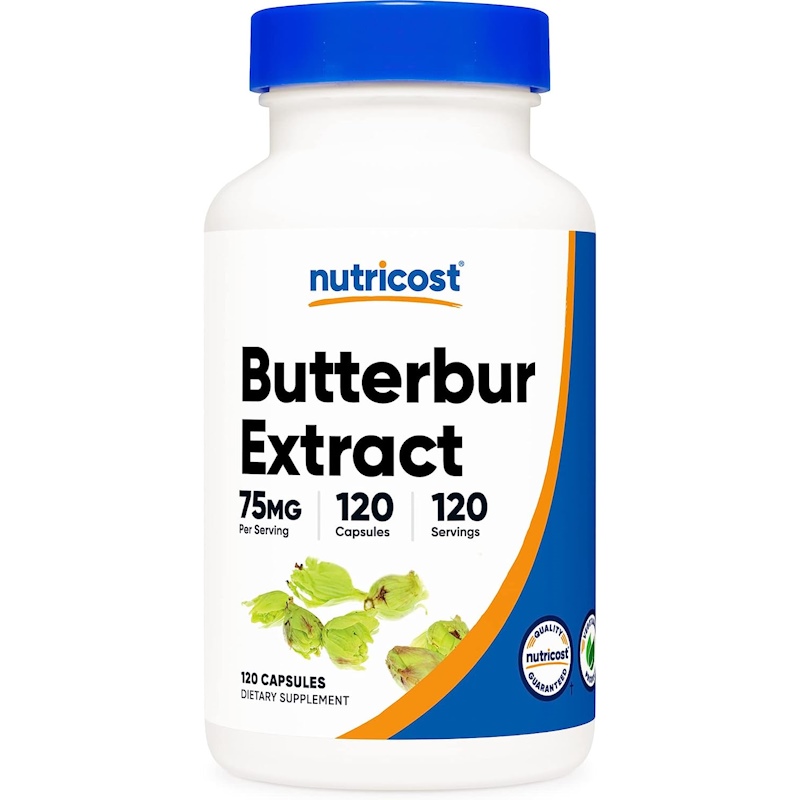
BMJ conducted a study to compare how effective natural butterbur and cetirizine (Zyrtec®) are in patients with seasonal allergic rhinitis.
125 patients took part in this study. 61 of the patients took one tablet of butterbur, 4 times a day (yikes), and 64 patients took one tablet of cetirizine a day for two weeks.
The study concluded that both treatment options (Zyrtec vs. Butterbur) had similar results in patients with seasonal allergic rhinitis. The study also stated that medical professionals should consider butterbur if the sedative effects of antihistamines need to be avoided in their patients.
You can buy Butterbur capsules on Amazon for a super affordable price, or you may be able to find them at your local supermarket as well.
Eye Drops

Over-the-counter eye drops can provide temporary relief from itchy and watery eyes caused by allergies. Look for products specifically formulated for allergy relief and contain an antihistamine.
The antihistamines in the eye drops limit your eye’s response to pollen and dander, giving you much-needed relief from itchy eyes.
My optometrist prescribed me Pataday® Once Daily Relief Drops, and I have had a great experience with them. These eye drops are now available over the counter without a prescription!
Immunotherapy

Immunotherapy is more commonly known as allergy shots, which are a long-term treatment option. The goal of allergy shots is to expose your immune system to allergens in hopes that this exposure will decrease your allergen sensitivity and provide you with symptom relief.
I have been receiving allergy shots every week for over 2 years now, and I have seen improvements! Some individuals do not see results which can be costly and disheartening, as this can be a 3-year process.
Nasal Sprays
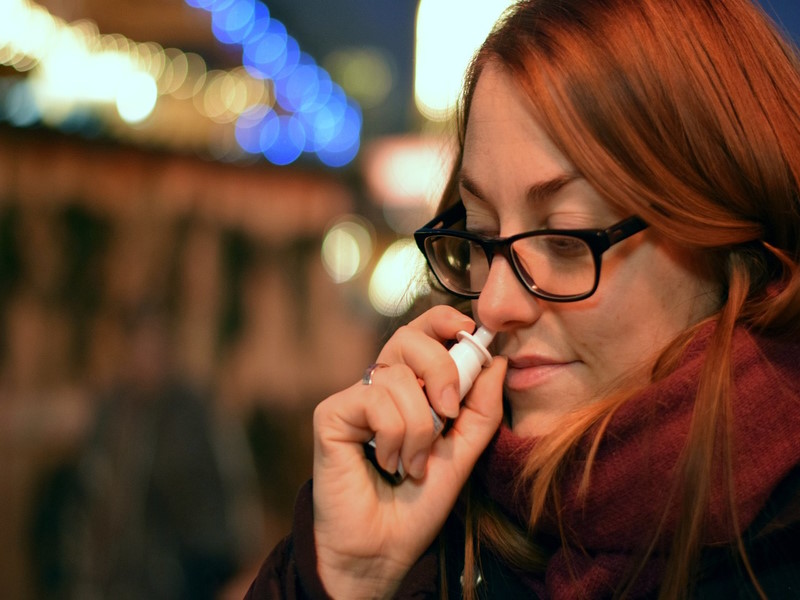
Nasal sprays containing corticosteroids can help reduce inflammation in the nasal passages and relieve symptoms such as congestion and sneezing. It’s important to follow the instructions carefully and consult a healthcare professional if you have any concerns.
A nasal spray might not be for everyone because you shoot a mist up into your nasal cavity. The most well-known nasal steroid brands include Flonase®, Nasonex®, and Nasacort®.
I used Flonase for many years and it relieved my sinus and nose allergies without any side effects. The only reason I stopped taking Flonase is because I started allergy shots and I no longer needed to take the medication.
Saline Nasal Spray or Rinse
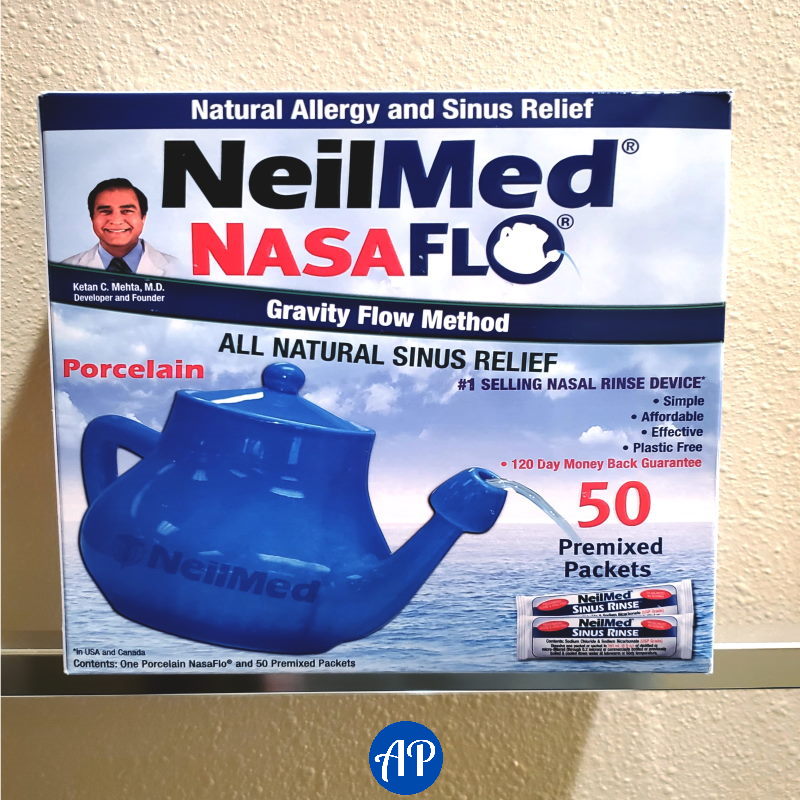
A saline spray or nasal rinse is essentially saltwater that is the same pH level as your body (so it doesn’t burn) with the intent of flushing out your nasal cavities to remove pollen, dust, spores, etc.
I use the Neti-Pot which comes with salt packets and a little pot to give your nose a good rinse. I like that this is a cheap, and natural approach to relieve my summer allergy symptoms.
Spirulina
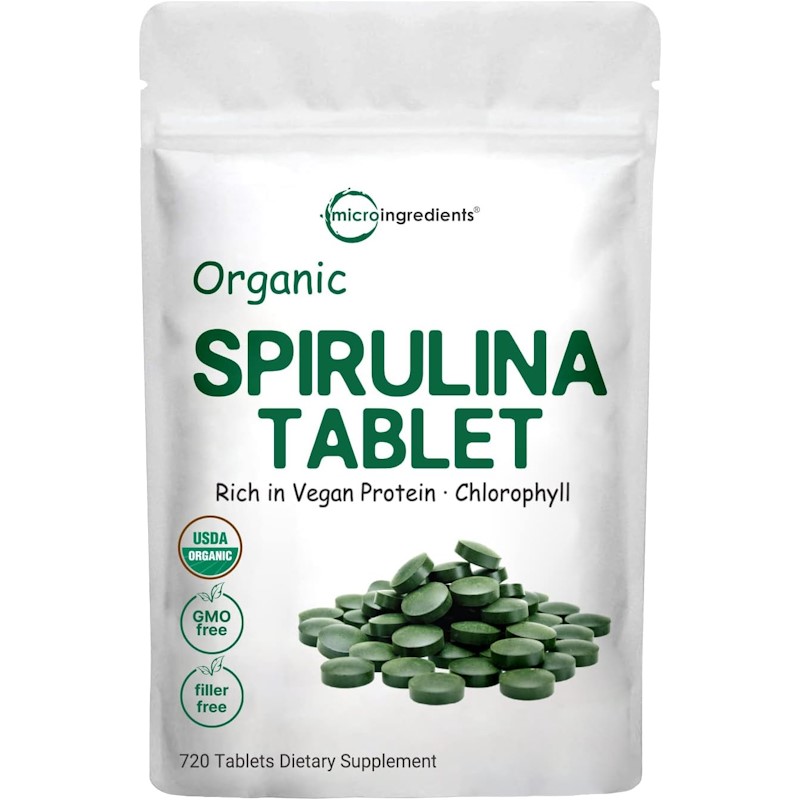
Spirulina is a natural blue-green alga (algae) that grows in fresh water and might be able to help with your summer allergy symptoms. The NIH published an article that evaluated spirulina as a treatment in patients with allergic rhinitis.
The study concluded, “Spirulina is clinically effective on allergic rhinitis when compared with placebo. Further studies should be performed in order to clarify the mechanism of this effect.”
Be careful! The NIH also documented a case where a 17-year-old male became anaphylactic after taking a spirulina tablet.
I would buy the organic spirulina on Amazon to get the best price.
Sublingual Immunotherapy

Sublingual immunotherapy (SLIT) is a treatment option for allergies where an allergist places a prescribed tablet under your tongue for a minute or two, and then you swallow it. Like allergy shots, this is a long-term treatment option to increase your allergen tolerance.
According to the American College of Allergy, Asthma, & Immunology, the SLIT process can take 3 to 5 years to develop immunity.
How to Prevent Summer Allergies

While summer allergies can be bothersome, there are several measures you can take to minimize or prevent their impact and enjoy the season to the fullest. Here are some strategies for coping with summer allergies.
Monitor Pollen Levels

Stay informed about daily pollen forecasts in your area. On high pollen days, try to limit your outdoor activities, especially during peak pollen times like early morning and late afternoon.
Download a Pollen Count App

A Pollen count app is designed to let you know the current pollen levels in your local area. Most of the apps also let you know the current weather, air quality, and pollution levels. Here are the top pollen count apps:
- Allergy Alert by Pollen.com
- BreezoMeter
- Klarify
- Pollen Wise
- WebMD Allergy
Utilizing a pollen count app will keep you up to date on how much pollen is in the air before you head outside.
Keep Windows Closed

To reduce exposure to outdoor allergens, keep windows closed and rely on air conditioning to keep your home cool and comfortable. If you do not have A/C monitor the pollen levels and only open the windows during non-peak hours.
Open windows make your home vulnerable to pollen, mold/fungi spores, and insects, all of which affect summer allergies. If you absolutely need to have your windows open, avoid opening bedroom windows to keep allergens out.
Make Your Home Allergy-Friendly

To make your home allergy-friendly, you need to take measures that limit the amount of allergens in the home. Consider these techniques:
- Change out of your outside clothes
- Dust regularly
- Shower to remove allergens
- Take off your shoes inside the home
- Use a HEPA Air Purifier
- Vacuum
Take Precautions When Outdoors

If you need to spend time outside, wear sunglasses to protect your eyes from pollen, and consider wearing a wide-brimmed hat to minimize exposure to allergens. Additionally, shower and change your clothes after spending time outdoors to remove any lingering pollen.
Wear a Mask
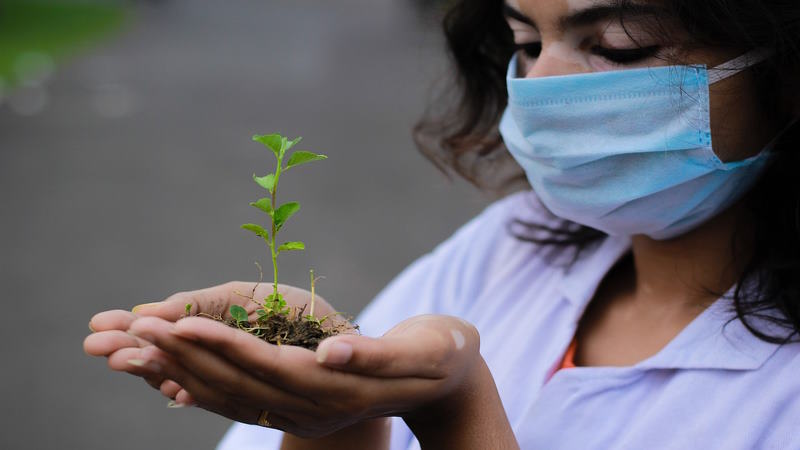
Masks can be highly effective in keeping allergens out of your nose and lungs. Keeping your respiratory system clean and clear will do wonders for your symptoms. Try to wear a mask, especially when doing yard work to limit your allergy symptoms.
Change All Air Filters
Filters can be an allergy sufferer’s best friend, but if they haven’t been cleaned or replaced they can turn into our enemy! No matter what you own with a filter, ensure you are maintaining it properly to maximize your allergy relief.
Here are a few examples of where you might have filters hiding around your home.
Heating, Ventilation, and Air Conditioning (HVAC) System

Homes that are equipped with central air have a filter located at the intake of your HVAC system to grab large particles so they don’t blow throughout the house.
Filter companies have high-efficiency filters for your HVAC system, but these filters may hinder heating/cooling performance and cause unnecessary stress on the unit.
Check with the manufacturer’s recommendations, but simply changing the filter may give you relief.
High-Efficiency Particulate Air (HEPA) Filter

A HEPA filter is a great way to not stress out your HVAC system, plus they remove pollen, bacteria, viruses, and spores.
Change your filter per the manufacturer’s recommendations, or sooner if you are experiencing more symptoms than usual.
Cabin Air Filter in Your Vehicle

Most vehicles have a cabin air filter, which filters the air inside your car. This is a quick easy fix to have clean air on the go. Check the manual of your vehicle to see when it should be replaced, for both of our vehicles it is recommended we change the filter at least every 2 years.
Vacuum Cleaner(s)
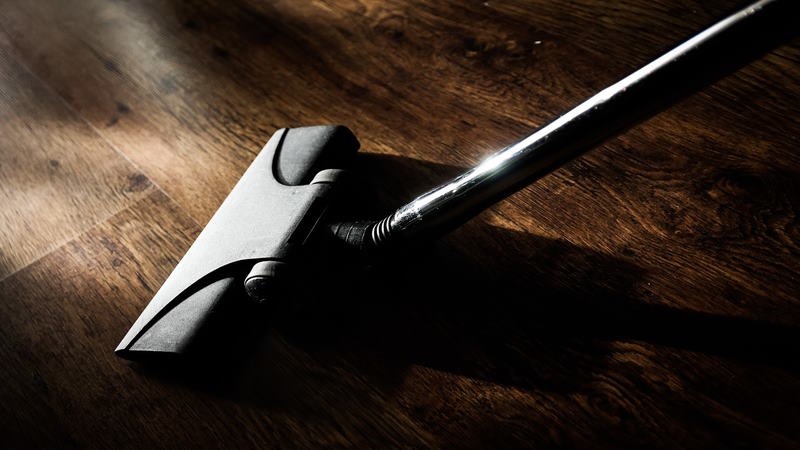
Most vacuum cleaners these days come with HEPA filters. Ensure you are cleaning the pre-filters (foamy ones) often to extend the life of the HEPA filter and replace the HEPA filter regularly.
Robot vacuums like Roomba’s have air filters as well, so don’t forget about maintaining our robot friends too!
Consider Getting A HEPA Filter for Your Home

High-efficiency particulate Air (HEPA) filters are designed to improve indoor air quality by removing particles, including allergens from the air. The EPA further explains that HEPA filters can remove 99.97% of dust, pollen, mold, bacteria, and other airborne particles that are 0.3 microns or larger.
Pollen grains are 30 microns in size and don’t stand a chance of getting past a HEPA filter.

My family has had great results with using an air purifier to improve our allergy symptoms in our home. Want to prevent summer allergy symptoms in your home? Get a top-rated air purifier on Amazon.
Final Thoughts
I am living proof that summer allergies are a thing, and since you found yourself here, you are probably a believer as well. Luckily there is a lot of information for seasonal allergies, including some great natural remedies for pollen allergies that you can incorporate at home.
